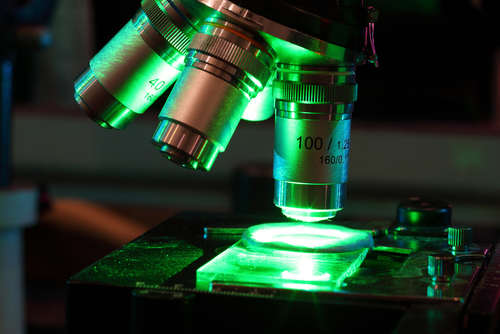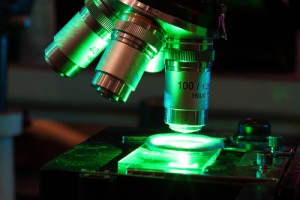Researchers Reveal Relevance of Microparticle Levels in MS, Clinically Isolated Syndrome
Written by |

 Researchers are continuing to make headway in discovering new insights into how MS works, which in turn could lead to next-generation therapies. A new study shows that in the early stages of multiple sclerosis (MS), plasma micro particles act as biomarkers as well as pathological factors that induce endothelial permeability and immune cells infiltration.
Researchers are continuing to make headway in discovering new insights into how MS works, which in turn could lead to next-generation therapies. A new study shows that in the early stages of multiple sclerosis (MS), plasma micro particles act as biomarkers as well as pathological factors that induce endothelial permeability and immune cells infiltration.
Multiple sclerosis (MS) is characterized by immune-mediated demyelinating, a process where damage of the protective covering (myelin sheath) of nerve fibers in the brain and spinal cord occurs, and a neurodegenerative disease of the human central nervous system (CNS). Although MS pathogenesis is not clear, it seems that cerebral endothelial cells, which constitute the barrier that separates and protects the CNS from the peripheral circulation, play a crucial role in this process. Additionally, cerebral endothelial permeability, i.e. the flow of small molecules or immune cells in and out of the vessel into the CNS, is altered in different clinical forms of MS. Moreover, a variety of cell types, including endothelial cells, release into the blood small vesicles, called micro particles (MPs) in response to inflammatory mediators. Importantly, endothelial and platelet dysfunction are thought to contribute to the development of multiple sclerosis (MS).
Clinically, MS is classified into relapsing-remitting (RRMS), secondary progressive (SPMS), and primary progressive (PPMS) subtypes. Clinically isolated syndrome (CIS) is an acute or subacute neurological episode affecting the optic nerves, brainstem or the spinal cord, which may occur in 85% of patients who will develop definitive MS. It is widely accepted that CIS patients are at high risk of developing MS.
In this study, the researchers analyzed circulating MPs from platelet and endothelium in the plasma of patients with different clinical forms of MS and compared with healthy subjects. In addition, they analyzed the effect of microparticles on endothelial cells dysfunction. Platelet-poor plasma was collected from 95 patients divided into subtypes of MS, i.e. 12 with clinically isolated syndrome, 51 relapsing-remitting, 23 secondary progressive, 9 primary progressive and 49 healthy controls, and samples were analyzed for the presence of platelet-derived and endothelium-derived microparticles using flow cytometry. The researchers observed in all MS subtypes revealed an important and similar increase of micro particles, including patients with common CIS, or patients in the remission phase of MS.
[adrotate group=”4″]
Additionally, they assess the effect of the purified MPs from MS subtypes and healthy donors on endothelial barriers by measuring trans-endothelial electric resistance (TEER), a method that evaluates the integrity of the endothelial monolayer, which is inversely proportional to the endothelial monolayer permeability. Microparticles from relapsing-remitting MS patients induced, at equivalent concentrations, a stronger disruption of endothelial barriers than those from healthy donors or from patients with CIS, suggesting that MP composition and its effect on the endothelial barrier differ between MS patients and healthy donors.
Overall, the researchers conclude that the increase of MPs in the plasma is an early and permanent consequence of inflammatory demyelinating processes, contributes for MS pathogenesis and should be considered as biomarkers of early stages of MS.
—-
The study, entitled “Microparticles in multiple sclerosis and clinically isolated syndrome: effect on endothelial barrier function,” was published in BMC Neuroscience and conducted at Centro de Biología Molecular, Universidade Autónoma de Madrid, Spain, and in the Neurology Department, Hospital Universitario Central de Asturias, Oviedo, Spain by first co-authors on the study Dr. Beatriz Marcos-Ramiro and Dr. Pedro Oliva Nacarino from the group of Dr. Jaime Millán and Dr. Eva Cernuda-Morollón, senior authors of the work.





